Just a disclaimer, I am pretty new to Android and slowly working through tutorials. Most tutorials dont talk about fragments at all in the beginning, but Android-studio by default sets up one for you.
I've read some of the past questions and the dev blog related to fragments and activities and they were helpful in giving me an idea as to the advantages of using fragments.
I am still a bit confused on when one would use a new activity in an app, it seems to me like everything could be accomplished with fragments and a single activity.
Lets say an app has multiple screens, do you implement that as one activity with multiple fragments, or multiple activities with one fragment each to them.

This image makes sense to me and demonstrates the power of fragments, but why on the handsets example is two activities required?
Another add-on question, should everything moving forward be done in a fragment?
Thank you and sorry if these questions didnt really make sense.